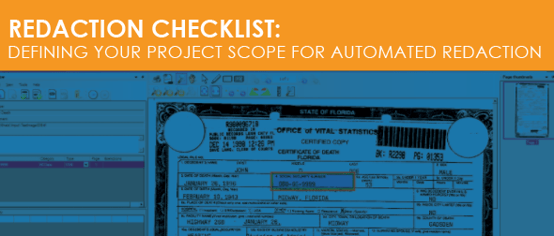In our last blog, we discussed the development of objective measures in your Quality Assessment and  Process Improvement (QAPI) program and using a SMART approach as described by Doran in Management Review in 1981. Today, we are going to focus on some additional considerations and discuss how to manage these measures so as to yield demonstrable and actionable improvement through the use of process improvement projects.
Process Improvement (QAPI) program and using a SMART approach as described by Doran in Management Review in 1981. Today, we are going to focus on some additional considerations and discuss how to manage these measures so as to yield demonstrable and actionable improvement through the use of process improvement projects.
Once you have identified the objective measures you plan on tracking, make sure that the numerator and denominator are appropriate for what you are trying to capture.
Is your data source reliable so that it will yield true information?
Will you be able to capture the data in a cost effective fashion?
Is the data hard to capture and of questionable accuracy?
The quality and accuracy of the captured data should be independent of the auditor collecting the data in order to ensure inter-auditor reliability, i.e. different people should arrive at the same results and outcomes. This is another area where automated data extraction may be useful.
Once you have collected the data, you will need to be sure that it is complete, and that you have a method by which incorrect, inaccurate, and irrelevant parts of the data can be corrected. Before you begin to collect the data you must understand whether the data will need to be severity adjusted. One key to successful data capture is to be able to identify your transplant patients throughout the entire spectrum of transplant care, including referral to listing, admissions, transplantation/donation as well as out-patient care. They should be flagged in your ADT and electronic medical record so that every encounter can be captured. While this may seem to be a daunting challenge, if patients are able to be flagged for VRE or MRSA in your system, for example, they can be flagged as a transplant patient.
Remember, you must first define
how you will collect your data and
then be able to analyze it effectively.
Utilizing an effective automated data extraction system can streamline data acquisition and organization. As you begin to measure areas of performance, it is important to clearly define the metric you are looking at so as to avoid scope creep, the tendency to try and measure too much in one project. Your hospital Quality Department may have guidelines on sample size, such as 5% of all patients over a timeframe or the next 30-50 events, to define the cohort to be studied. Identify your baseline performance of the measure you are going to analyze and implement any new activity or process consistently, avoiding the temptation to “fine tune” the effort during the data gathering process so as to obtain true measurements of your program’s performance. Once you have collected the cohort data, analyze it over time, and if necessary, make changes. We will talk later about how to create a process improvement project from your data.
True process improvement results from
changes implemented from valid data,
not by responding to single data points
that may not represent true outcomes.
Once you have collected the data and have your objective measures, how do you judge your results to see if your program’s performance is appropriate? First, there are several comparative metrics that you can use as benchmarks. Some benchmarks are published, for example by the Scientific Registry of Transplant Recipients or the University Hospital Consortium. Specific measures include:
- Length of stay
- Patient and graft survival
- Delayed graft function rates
- Program financial performance
Other benchmarks may be obtained from professional organizations (for example UNOS staffing survey), comparable hospitals or facilities known to have developed a best practice model. When adapting another center’s benchmark, however, remember that all transplant programs are different and someone else’s methodologies and results may not be applicable to your program. For example, if you are an inner city program where patients, once discharged return home, your length of stay metric should not be determined from a program that draws from a more rural area and has out-patient accommodations and facilities to facilitate early discharge. Programs may establish their own benchmarks using historical data or institutional experiences.

As you begin to measure areas of performance, it is important to clearly define the metric you are looking at in order to avoid scope creep, the tendency to try and measure too much in one project. Your hospital Quality Department may have guidelines on sample size, such as 5% of all patients over a timeframe or the next 30-50 events, to define the cohort to be studied. Identify your baseline performance of the measure you are going to analyze and implement any new activity or process consistently, avoiding the temptation to “fine tune” the effort during the data gathering process in order to obtain true measurements of your program’s performance. Once you have collected the cohort data, analyze it over time, and if necessary, make changes.
We will talk later about how to create a process improvement project from your data but remember that true process improvement results from changes implemented from valid data, not by responding to single data points that may not represent true outcomes.
In our next blog, we will talk about what to do with these objective measures and how to translate them into a successful quality project.
Upcoming Webinar
Join two transplantation experts as they highlight what is included in an effective QAPI program.
What Makes an Effective QAPI Program
Tuesday, July 26, 2016
11AM - 12PM Central